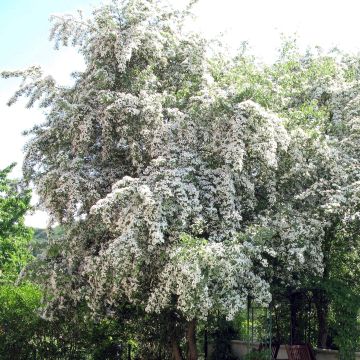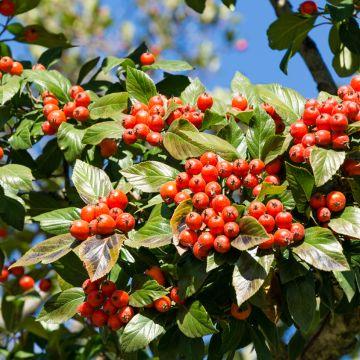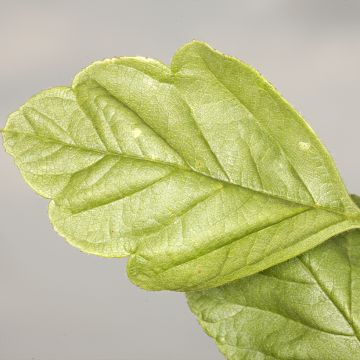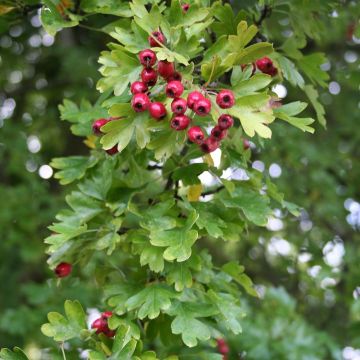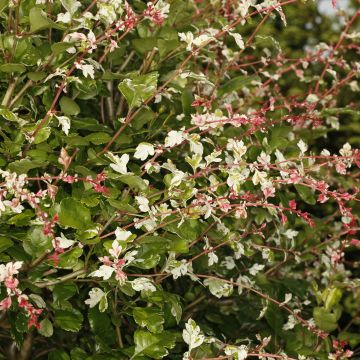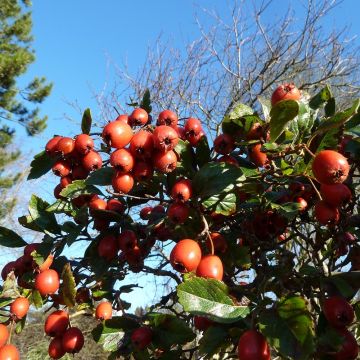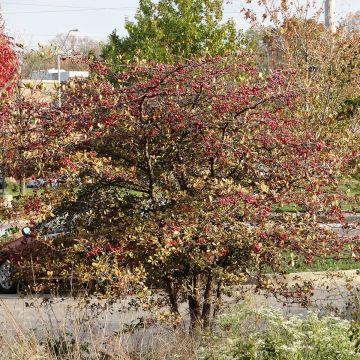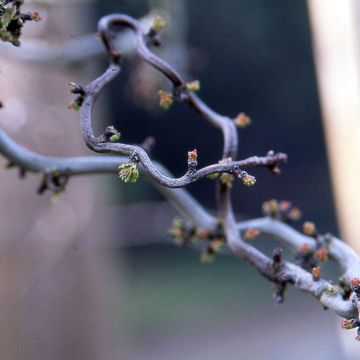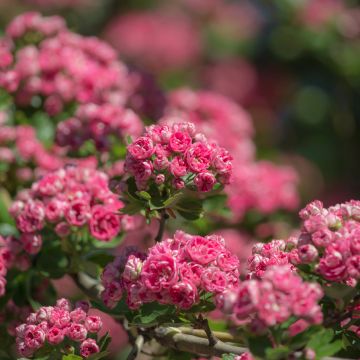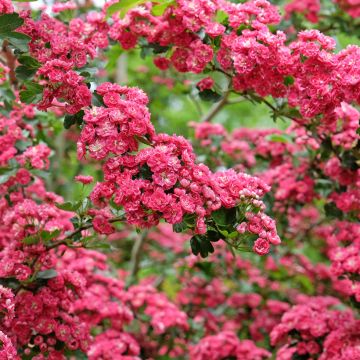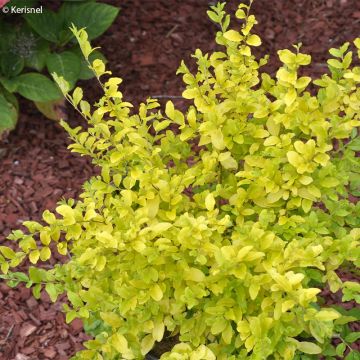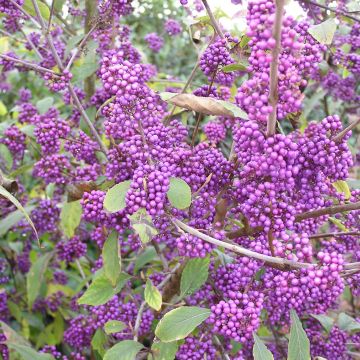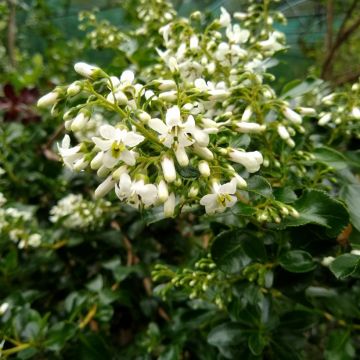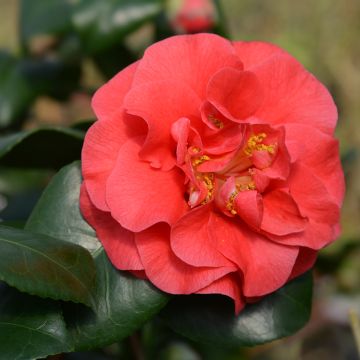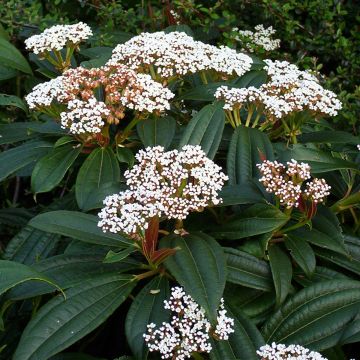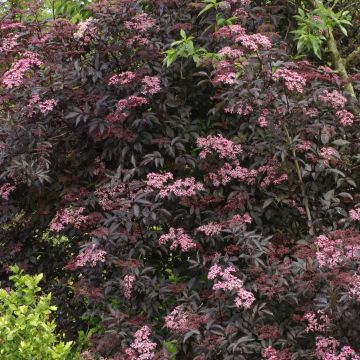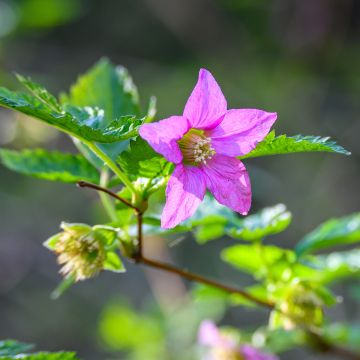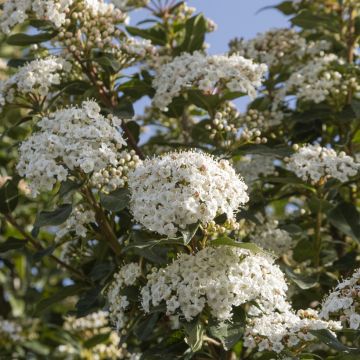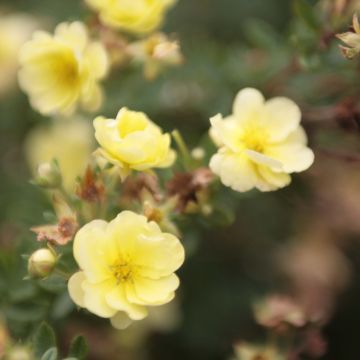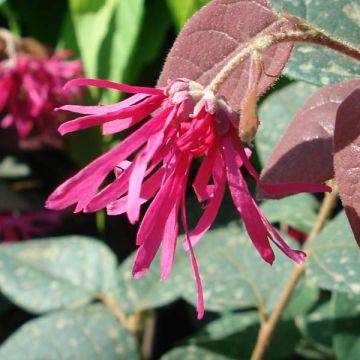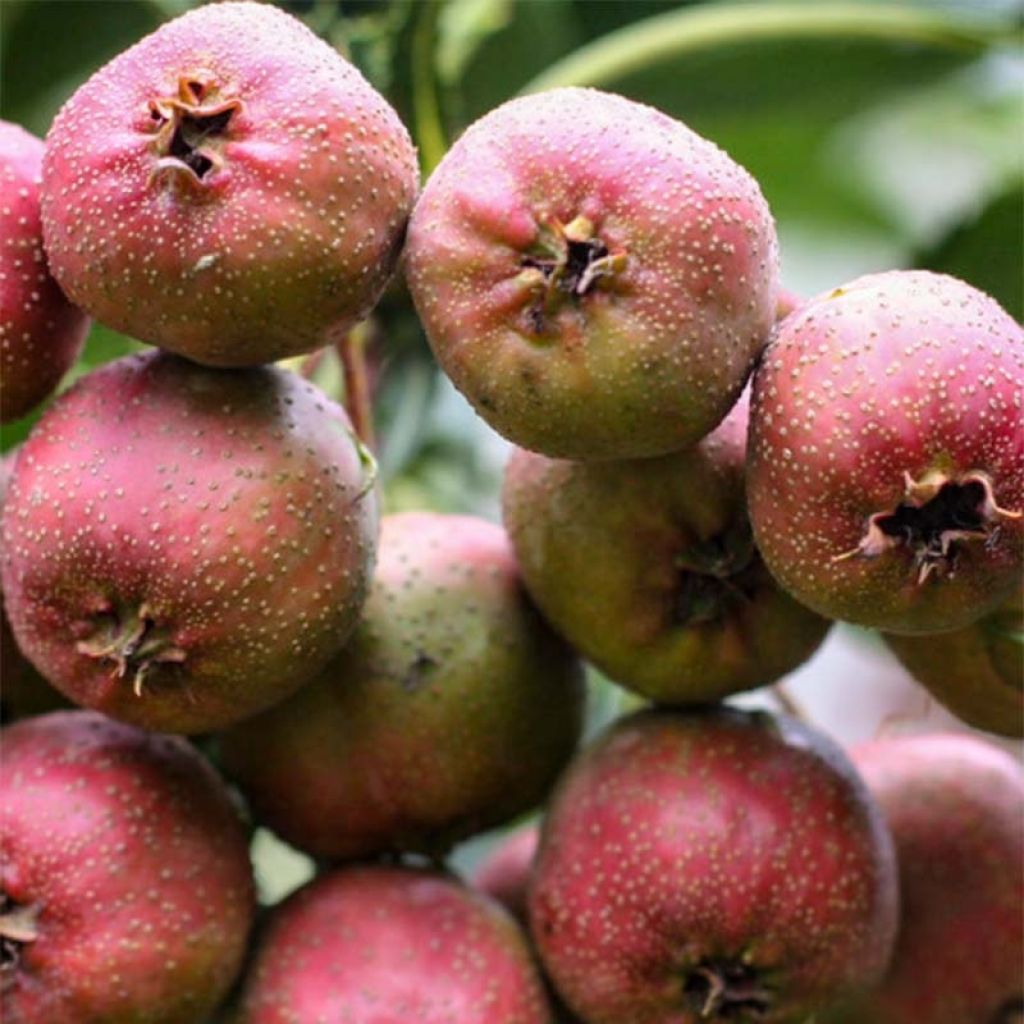

Crataegus pinnatifida Big ball - Hawthorn
Crataegus pinnatifida Big ball - Hawthorn
Crataegus pinnatifida Big ball
Why not try an alternative variety in stock?
View all →This plant carries a 24 months recovery warranty
More information
We guarantee the quality of our plants for a full growing cycle, and will replace at our expense any plant that fails to recover under normal climatic and planting conditions.
From €5.90 for pickup delivery and €6.90 for home delivery
Express home delivery from €8.90.
Does this plant fit my garden?
Set up your Plantfit profile →
Description
Crataegus pinnatifida 'Big Ball' is a variety of Chinese hawthorn selected for its thornless vegetation, abundant fruiting, large fruits, and compact habit. It is more suitable for small gardens. It is a highly rewarding, hardy, and easy to grow small tree, which is also valued for its beautiful coppery shoots in spring, its nicely lobed foliage, and its spring flowering that attracts bees. Its bright red fruits, called haws, are the size of large cherries. They are harvested in September and can be used to make jellies, compotes, and jams. Chinese hawthorn is perfect in shrub borders or in a rustic hedge combined with other unique fruit trees.
Originating from China and Korea, Crataegus pinnatifida is a very hardy small tree belonging to the Rosaceae family, just like its cousin the hawthorn of our countryside. The 'Big Ball' cultivar has a dense, bushy, and generally rounded habit. The shrub reaches about 3.5m (12ft) in height and 2.5m (8ft) in width at maturity. Its growth rate is moderate. Flowering occurs in May-June and takes the form of clusters or corymbs of small cream-white flowers, which are popular with bees. After pollination, globular fruits measuring 2cm (1in) in diameter form, which are bright red but punctuated with small white lenticels. Their flesh is edible, with a fairly neutral taste but distinctly acidic. The young branches are reddish-brown in colour, then become greyish-brown with age. In spring, large red buds appear, followed by spectacular reddish-coppery young shoots. These unfurl into large dark green leaves, oval or triangular-ovate in shape, measuring 5 to 10cm (2 to 4in) long and 4 to 7.5cm (2 to 3in) wide, divided into 6 to 10 pairs of lobes. These leaves often turn a beautiful reddish-coppery colour in autumn before falling off.
Crataegus 'Big Ball' adapts to any well-drained garden soil, even limestone, in sunny positions. Plant it in a small garden as a solitary specimen, or in a rustic hedge with other trouble-free shrubs such as hawthorns, rowans, cotoneasters, medlars, serviceberries, blackthorns, and European spindle trees.
The fruits of the Chinese hawthorn are used in traditional Chinese medicine. They are rich in vitamin C and are sometimes used in slimming or digestive herbal teas.
Report an error about the product description
Crataegus pinnatifida Big ball - Hawthorn in pictures


Plant habit
Flowering
Foliage
Botanical data
Crataegus
pinnatifida
Big ball
Rosaceae
China
Other Hawthorn Crataegus
Planting and care
Plant in autumn in any well-drained soil, even limestone, in a sunny position to promote foliage colouration and fruit ripening. Not demanding, it will be satisfied with a balanced pruning in February. Water regularly and abundantly, but spaced out, to promote recovery. To form a hawthorn tree, reduce the bush, if necessary, to a single stem after planting. Then cut all the shoots at their point of origin.
Planting period
Intended location
Care
This item has not been reviewed yet - be the first to leave a review about it.
Hedge shrubs
Haven't found what you were looking for?
Hardiness is the lowest winter temperature a plant can endure without suffering serious damage or even dying. However, hardiness is affected by location (a sheltered area, such as a patio), protection (winter cover) and soil type (hardiness is improved by well-drained soil).

Photo Sharing Terms & Conditions
In order to encourage gardeners to interact and share their experiences, Promesse de fleurs offers various media enabling content to be uploaded onto its Site - in particular via the ‘Photo sharing’ module.
The User agrees to refrain from:
- Posting any content that is illegal, prejudicial, insulting, racist, inciteful to hatred, revisionist, contrary to public decency, that infringes on privacy or on the privacy rights of third parties, in particular the publicity rights of persons and goods, intellectual property rights, or the right to privacy.
- Submitting content on behalf of a third party;
- Impersonate the identity of a third party and/or publish any personal information about a third party;
In general, the User undertakes to refrain from any unethical behaviour.
All Content (in particular text, comments, files, images, photos, videos, creative works, etc.), which may be subject to property or intellectual property rights, image or other private rights, shall remain the property of the User, subject to the limited rights granted by the terms of the licence granted by Promesse de fleurs as stated below. Users are at liberty to publish or not to publish such Content on the Site, notably via the ‘Photo Sharing’ facility, and accept that this Content shall be made public and freely accessible, notably on the Internet.
Users further acknowledge, undertake to have ,and guarantee that they hold all necessary rights and permissions to publish such material on the Site, in particular with regard to the legislation in force pertaining to any privacy, property, intellectual property, image, or contractual rights, or rights of any other nature. By publishing such Content on the Site, Users acknowledge accepting full liability as publishers of the Content within the meaning of the law, and grant Promesse de fleurs, free of charge, an inclusive, worldwide licence for the said Content for the entire duration of its publication, including all reproduction, representation, up/downloading, displaying, performing, transmission, and storage rights.
Users also grant permission for their name to be linked to the Content and accept that this link may not always be made available.
By engaging in posting material, Users consent to their Content becoming automatically accessible on the Internet, in particular on other sites and/or blogs and/or web pages of the Promesse de fleurs site, including in particular social pages and the Promesse de fleurs catalogue.
Users may secure the removal of entrusted content free of charge by issuing a simple request via our contact form.
The flowering period indicated on our website applies to countries and regions located in USDA zone 8 (France, the United Kingdom, Ireland, the Netherlands, etc.)
It will vary according to where you live:
- In zones 9 to 10 (Italy, Spain, Greece, etc.), flowering will occur about 2 to 4 weeks earlier.
- In zones 6 to 7 (Germany, Poland, Slovenia, and lower mountainous regions), flowering will be delayed by 2 to 3 weeks.
- In zone 5 (Central Europe, Scandinavia), blooming will be delayed by 3 to 5 weeks.
In temperate climates, pruning of spring-flowering shrubs (forsythia, spireas, etc.) should be done just after flowering.
Pruning of summer-flowering shrubs (Indian Lilac, Perovskia, etc.) can be done in winter or spring.
In cold regions as well as with frost-sensitive plants, avoid pruning too early when severe frosts may still occur.
The planting period indicated on our website applies to countries and regions located in USDA zone 8 (France, United Kingdom, Ireland, Netherlands).
It will vary according to where you live:
- In Mediterranean zones (Marseille, Madrid, Milan, etc.), autumn and winter are the best planting periods.
- In continental zones (Strasbourg, Munich, Vienna, etc.), delay planting by 2 to 3 weeks in spring and bring it forward by 2 to 4 weeks in autumn.
- In mountainous regions (the Alps, Pyrenees, Carpathians, etc.), it is best to plant in late spring (May-June) or late summer (August-September).
The harvesting period indicated on our website applies to countries and regions in USDA zone 8 (France, England, Ireland, the Netherlands).
In colder areas (Scandinavia, Poland, Austria...) fruit and vegetable harvests are likely to be delayed by 3-4 weeks.
In warmer areas (Italy, Spain, Greece, etc.), harvesting will probably take place earlier, depending on weather conditions.
The sowing periods indicated on our website apply to countries and regions within USDA Zone 8 (France, UK, Ireland, Netherlands).
In colder areas (Scandinavia, Poland, Austria...), delay any outdoor sowing by 3-4 weeks, or sow under glass.
In warmer climes (Italy, Spain, Greece, etc.), bring outdoor sowing forward by a few weeks.

































